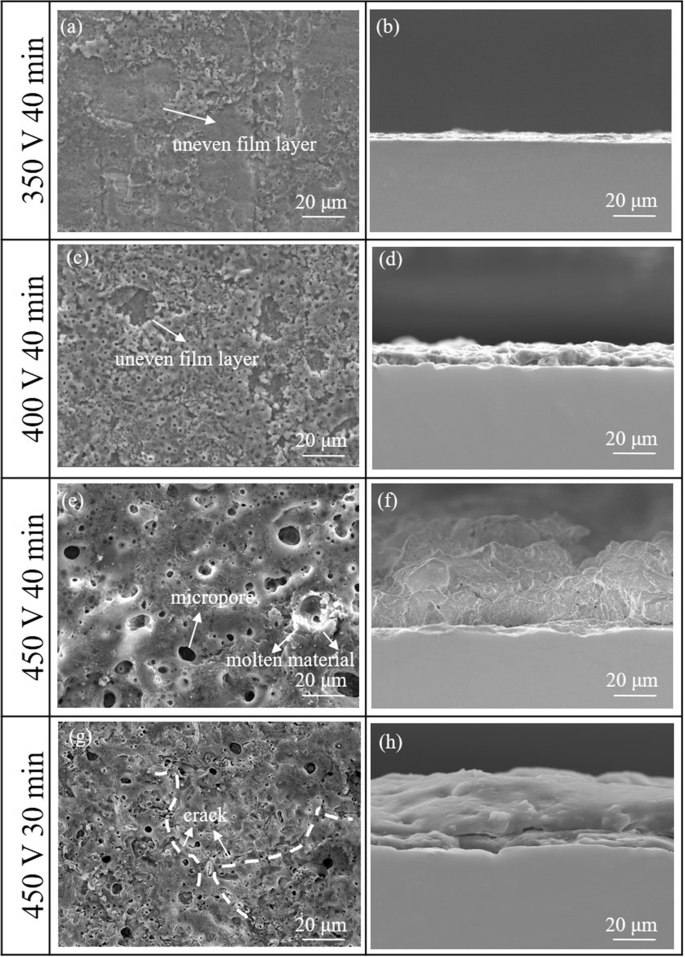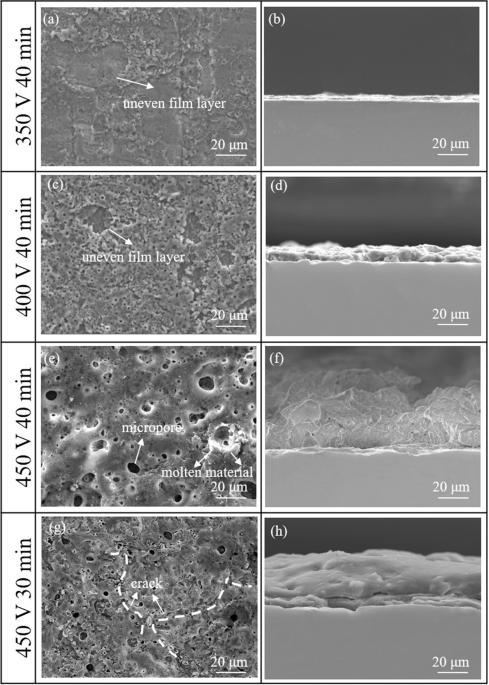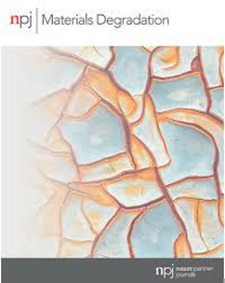Corrosion behavior of laser powder bed fusion additive manufacturing produced TiNi alloy by micro-arc oxidation
IF 6.6
2区 材料科学
Q1 MATERIALS SCIENCE, MULTIDISCIPLINARY
引用次数: 0
Abstract
To improve the corrosion resistance of TiNi alloy fabricated by laser powder bed fusion (LPBF), a porous oxidation layer was synthesized by micro-arc oxidation in a sodium aluminate and sodium silicate electrolyte. The influences of the applied voltage and the processing time on the morphology of oxidation layer were investigated, and the corrosion behavior of the oxidation layer in artificial saliva was evaluated and compared with that of the as-fabricated LPBF alloy. The results indicate that, as increasing the applied voltage and the processing time, the oxidation layer becomes uniform and integrated. The optimum parameters are with an applied voltage of 450 V and processing time of 40 min. The oxidation layer primarily contains α-Al2O3 and consists of two layers, i.e., a thin, compact and uniform inner layer and a porous outer layer. The formation of stable α-Al2O3 phase in the coating and its almost non-porous dense structure reduce the channels for corrosion ions to penetrate into the substrate through coating, thereby improving the corrosion resistance of TiNi alloy.


激光粉末床熔融增材制造生产的 TiNi 合金的微弧氧化腐蚀行为
为了提高激光粉末熔床(LPBF)制造的钛镍合金的耐腐蚀性,在铝酸钠和硅酸钠电解液中通过微弧氧化合成了多孔氧化层。研究了外加电压和加工时间对氧化层形貌的影响,评估了氧化层在人工唾液中的腐蚀行为,并将其与制成的 LPBF 合金进行了比较。结果表明,随着施加电压和加工时间的增加,氧化层变得均匀且完整。最佳参数为施加电压 450 V,加工时间 40 分钟。氧化层主要含有 α-Al2O3,由两层组成,即薄而紧密均匀的内层和多孔的外层。涂层中形成稳定的 α-Al2O3 相及其几乎无孔的致密结构减少了腐蚀离子通过涂层渗入基体的通道,从而提高了 TiNi 合金的耐腐蚀性。
本文章由计算机程序翻译,如有差异,请以英文原文为准。
求助全文
约1分钟内获得全文
求助全文
来源期刊

npj Materials Degradation
MATERIALS SCIENCE, MULTIDISCIPLINARY-
CiteScore
7.80
自引率
7.80%
发文量
86
审稿时长
6 weeks
期刊介绍:
npj Materials Degradation considers basic and applied research that explores all aspects of the degradation of metallic and non-metallic materials. The journal broadly defines ‘materials degradation’ as a reduction in the ability of a material to perform its task in-service as a result of environmental exposure.
The journal covers a broad range of topics including but not limited to:
-Degradation of metals, glasses, minerals, polymers, ceramics, cements and composites in natural and engineered environments, as a result of various stimuli
-Computational and experimental studies of degradation mechanisms and kinetics
-Characterization of degradation by traditional and emerging techniques
-New approaches and technologies for enhancing resistance to degradation
-Inspection and monitoring techniques for materials in-service, such as sensing technologies
文献相关原料
| 公司名称 | 产品信息 | 采购帮参考价格 |
|---|
 求助内容:
求助内容: 应助结果提醒方式:
应助结果提醒方式:


